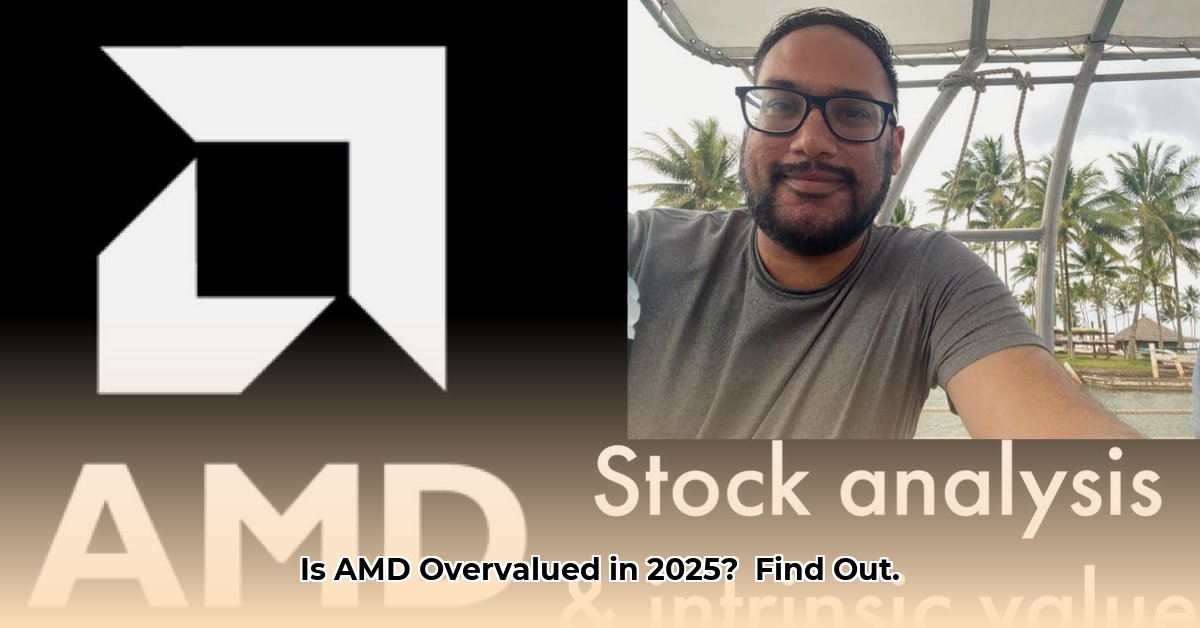
AMD's Market Position and Recent Performance
AMD's recent success is undeniable, marked by significant market share gains in CPUs and GPUs across gaming and data center markets. Their innovative chiplet technology provides a competitive advantage against industry giants like Intel and Nvidia. However, maintaining this momentum requires consistent innovation and substantial R&D investment, impacting profitability. The question remains: can this growth be sustained, and can AMD retain its competitive edge long-term? This is paramount for assessing its intrinsic value. Is the current market price justified by future earnings potential?
Assessing AMD's Intrinsic Value: The Challenges of Forecasting
Numerous financial analysts have employed Discounted Cash Flow (DCF) analysis (a method used to estimate the value of an investment based on its expected future cash flows) to determine AMD's intrinsic value. These analyses often reveal a considerable gap between the current market price and the estimated intrinsic value, raising concerns about potential overvaluation. Crucially, DCF modelling is highly sensitive to assumptions about future growth and risk. Minor alterations in these inputs can dramatically alter the calculated intrinsic value. This inherent uncertainty underscores the complexity of accurately valuing AMD.
Key Differences in DCF Models: AlphaSpread vs. GuruFocus
Two prominent DCF models, AlphaSpread and GuruFocus, illustrate the challenges. AlphaSpread, using a five-year forecast horizon and free cash flow (FCFF, the cash flow available to all investors), suggests potential overvaluation 1. Conversely, GuruFocus employs a ten-year, two-stage model, whose output depends heavily on user-defined inputs (earnings per share (EPS) versus free cash flow) and chosen parameters. This highlights the substantial impact of model assumptions on valuation outcomes. How can investors reconcile these divergent results? A detailed examination of the underlying assumptions is crucial.
Factors Driving Valuation Discrepancies
Several key factors contribute to the discrepancies between DCF models:
Time Horizon: AlphaSpread's shorter-term (five-year) forecast prioritizes short-term predictability, while GuruFocus's longer-term (ten-year) forecast incorporates assumptions about later-stage growth. This difference in time horizon significantly impacts projected future cash flows.
Cash Flow Metric: The choice between FCFF and EPS significantly influences the valuation. FCFF represents cash available to all investors, whereas EPS reflects profit allocated to shareholders. The choice of metric significantly impacts the resulting valuation.
Discount Rate: Differences in the methodology used to determine the discount rate (which accounts for the risk associated with future cash flows) and the resultant rate used are another critical difference.
Terminal Value: The terminal value, representing the expected value beyond the explicit forecast period, is a significant component of DCF valuations. Divergent methods of calculating this value contribute to varying outcomes.
Risk Assessment and Mitigation Strategies
AMD, like any technology company, faces several risks:
| Risk Factor | Likelihood | Potential Impact | Mitigation Strategies |
|---|---|---|---|
| Overvaluation | Likely | Significant | Diversification, close valuation metric tracking, sensitivity analysis |
| Intense Competition | Likely | Moderate to High | Continuous innovation, strategic partnerships |
| Supply Chain Disruptions | Moderate | Significant | Diverse supplier base, robust inventory management |
| Economic Slowdown | Moderate | High | Cost reduction, focus on high-margin products |
| Technological Disruption | Less Likely | High | Heavy R&D investment, strategic acquisitions |
Navigating these risks requires a proactive and adaptable strategy. Continuous monitoring of financial performance and market dynamics is essential.
Navigating Uncertainty and Making Informed Investment Decisions
The differing DCF valuations underscore the inherent uncertainties in forecasting. A sensitivity analysis, systematically varying key inputs (growth rates, discount rates, terminal growth rates), is crucial for determining a range of possible valuations. This approach reveals the model's robustness and highlights areas of significant uncertainty. Combining DCF with other valuation methods, such as comparable company analysis, provides a more comprehensive assessment. DCF serves as one tool among several in a robust valuation toolkit.
Practical Implications for Investors
Investors should consider several key approaches:
- Sensitivity Analysis: Conduct a sensitivity analysis to understand how changes in input assumptions affect the final valuation.
- Long-Term Perspective: Integrate broader economic and technological trends into long-term outlooks.
- Diversification: Employ multiple valuation methods and diversify investment portfolios.
- Continuous Monitoring: Regularly re-assess assumptions in light of new developments.
The path forward for AMD, like that of any technology company, remains subject to change. Careful consideration of both short-term risks and long-term potential is key to making sound investment decisions. The information provided is for informational purposes only and does not constitute financial advice.